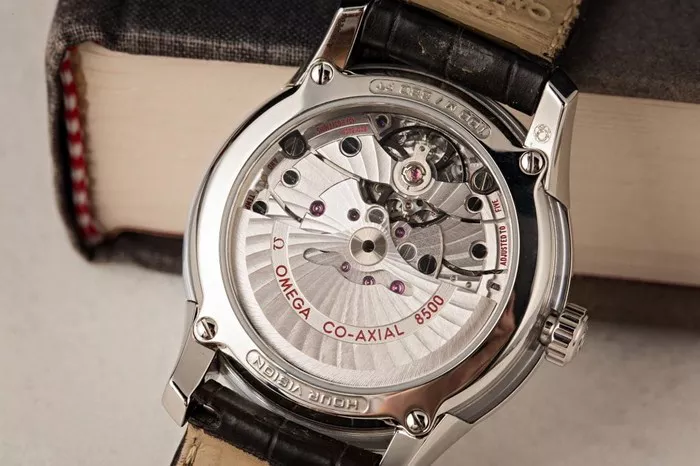Embarking on a journey through the annals of horological history, the foundation of Omega Watches emerges as a pivotal chapter in the narrative of precision and innovation. This article navigates the corridors of time, unraveling the origins and evolution of Omega, a brand that has left an indelible mark on the world of luxury timepieces. With a focus on precision, heritage, and enduring legacy, we delve into the inception of Omega Watches to answer the fundamental question: When was Omega Watches founded?
The Birth of Precision: Foundation of Omega Watches
1848: The Genesis in La Chaux-de-Fonds
The story of Omega Watches commences in 1848 in La Chaux-de-Fonds, Switzerland, with the establishment of La Generale Watch Co. by a visionary young man named Louis Brandt. Operating initially as an assembly workshop, Louis Brandt’s dedication to quality and precision laid the groundwork for what would evolve into one of the most revered watchmaking houses in the world.
1879: Transformation into Omega
In 1879, following Louis Brandt’s passing, his two sons, Louis-Paul and Cesar Brandt, assumed leadership of the company. Under their stewardship, the brand transformed, culminating in the creation of the Omega caliber in 1894. This momentous development marked the birth of the brand name “Omega” and set the stage for a legacy defined by accuracy and technological advancements.
A Chronometer Legacy: Omega’s Contributions to Precision
1894: The Birth of the Omega Caliber
The year 1894 witnessed a breakthrough that would resonate through the corridors of time. The introduction of the Omega caliber marked a pivotal moment in watchmaking history. This groundbreaking movement set new standards for precision and became synonymous with exceptional timekeeping, laying the foundation for Omega’s enduring commitment to chronometric excellence.
1932: Official Olympic Timekeeper
Omega’s pursuit of precision extended to the global stage in 1932 when the brand assumed the prestigious role of the official timekeeper for the Olympic Games in Los Angeles. This partnership marked the beginning of a longstanding association with the Olympics, where Omega’s timekeeping precision would become an integral part of measuring athletic feats on the world’s grandest stage.
Enduring Innovation: Technological Milestones
1957: The Speedmaster Debuts
In 1957, Omega introduced the Speedmaster, a chronograph designed for motorsports and timing events. Little did the world know that this model would go on to achieve legendary status, ultimately becoming the first watch worn on the moon during NASA’s Apollo missions. The Speedmaster’s enduring appeal and technological prowess exemplify Omega’s commitment to innovation.
2007: Co-Axial Escapement Advancement
In the pursuit of further refining mechanical movements, Omega unveiled the Coaxial escapement in 2007. Developed in collaboration with watchmaking luminary George Daniels, this innovation significantly reduced friction within the movement, enhancing precision and extending service intervals. The Coaxial escapement stands as a testament to Omega’s dedication to pushing the boundaries of horological excellence.
Global Reach: Omega in the Modern Era
21st Century: Omega’s Cultural Impact
As Omega ventured into the 21st century, the brand solidified its cultural impact through collaborations, sponsorships, and high-profile endorsements. The Seamaster’s association with James Bond, the Speedmaster’s lunar legacy, and partnerships with international celebrities underscore Omega’s ability to seamlessly integrate into the fabric of contemporary culture while maintaining its timeless allure.
Master Chronometer Certification
In recent years, Omega has continued to uphold its commitment to precision with the introduction of the Master Chronometer certification. Co-developed with the Swiss Federal Institute of Metrology (METAS), this certification sets rigorous standards for accuracy, magnetic resistance, and overall performance. Omega’s embrace of cutting-edge technologies ensures that its watches not only reflect the brand’s storied past but also remain at the forefront of modern horology.
Conclusion: The Unbroken Thread of Timekeeping Mastery
In conclusion, the founding of Omega Watches in 1848 marks the genesis of a journey characterized by precision, innovation, and enduring legacy. From the inception of the Omega caliber to the Coaxial escapement and the modern era of Master Chronometer certification, Omega has consistently pushed the boundaries of what is achievable in the realm of horology.
Omega Watches, founded in the crucible of Swiss watchmaking excellence, transcends time as more than a brand—it is a custodian of chronometric mastery. The unbroken thread of precision that runs through its history connects each tick of the hands to a legacy shaped by pioneers, technological milestones, and a relentless pursuit of perfection.
As Omega continues to shape the landscape of luxury timepieces, the answer to “When was Omega Watches founded?” echoes not just in historical timelines but in the heartbeat of each meticulously crafted movement. It resonates with the cultural impact of iconic models and the enduring legacy of a brand that has mastered the art of measuring time, setting standards that endure through the ages.

